weBoost released the Drive Reach recently which is a more powerful and refined version of the venerable Drive 4G-X, the gold standard for cellular amplifiers since 2014. I have been using mine for a few months, and have some observations.
The Drive Reach is a cell phone signal booster with three major components – an outdoor antenna, amplifier and inside antenna. It is designed for use primarily in vehicles, and includes a 12v cigarette adapter style power cable and power supply.
Cell amplifiers are designed to help improve the signal strength in areas where it is below a specific threshold – they’re not designed to improve signal or throughput in good quality signal areas. They do this by using an outdoor antenna that has a better chance of picking up the remote signal, that are usually much larger than antennas on phones or other devices, and sending that signal to the amplifier. The amplifier then increases the signal within various FCC limits, and re-broadcasts that signal on the inside antenna. Devices close to the inside antenna should either have a usable signal in the worst case, or perform much better if their signal initially was low.
There are a number of brands to choose from on the market, but the leader for some time in terms of performance on US LTE bands has been the weBoost Drive 4G-X.
Do you need an amplifier?
One thing you should carefully consider is whether you actually need an amplifier. Many people assume that adding one would only be good, and help improve overall signal and performance, but this is often not the case.
Amplifiers are a perfect solution for devices without external antennas such as smartphones and tablets, especially in a car/truck with lots of metal around, and where signal is in the mid-range. Boats are usually a different situation, both because of their construction, location, and the devices used.
For devices such as a Peplink LTE router with existing external antennas, an amplifier may actually cause performance to be worse. A directly connected outdoor antenna like the Wilson 4G marine can offer much better performance.
I personally use an amplifier only when I am on longer trips to known areas where I will be far away from any towers, cities, and the like. The rest of the time, I use the same Wilson 4G marine antenna without the amplifier, directly connected to the primary cellular antenna port of my Peplink LTE router. While I am at my home marina, I have it setup this way all the time, as adding the amplifier severely restricts the overall performance since I am close to a major metro area with dense cellular towers.
When considering whether you need an amplifier, look at where you will be boating, how close you will be to towns and population areas where there might be towers, and the terrain around you. If you are unsure as to whether an amplifier will be required, start with a good quality outdoor antenna, and add an amplifier where needed.
weBoost Drive Reach vs Drive 4G-X
The biggest difference between the Drive Reach and 4G-X is power. Both uplink and downlink power have been increased in the Reach, which means that you should be able to pick up more distant signals, and broadcast them at a higher power inside.
Powerful Signal have done a fantastic detailed comparison between the Reach and 4G-X available here. Scroll down to the “Uplink and downlink power” section for a detailed analysis of bands and uplink vs downlink. I’ve summarized below:
Uplink power is in reference to how much power the amplifier has with the outside antenna to connect to a remote cell tower. From Powerful Signal:
The Drive Reach has over three times the uplink power of the Drive 4G‑X (753 mW ÷ 242 mW = 3.12). That means the Drive Reach can connect to towers that are much farther away than those the lower-powered Drive 4G‑X can reach.
-Powerful Signal
Downlink power measures how much power can be used on the internal antenna for devices that are taking advantage of the amplifier. Again, from Powerful Signal:
The Drive Reach has nearly twice the downlink power of the Drive 4G‑X (3.24 mW ÷ 1.78 mW = 1.82). That means the Drive Reach can connect to more phones in your vehicle at a greater distance from the inside antenna.
-Powerful Signal
Overall, the Drive should be able to grab more distant remote signals and broadcast them with more power inside.
In the box
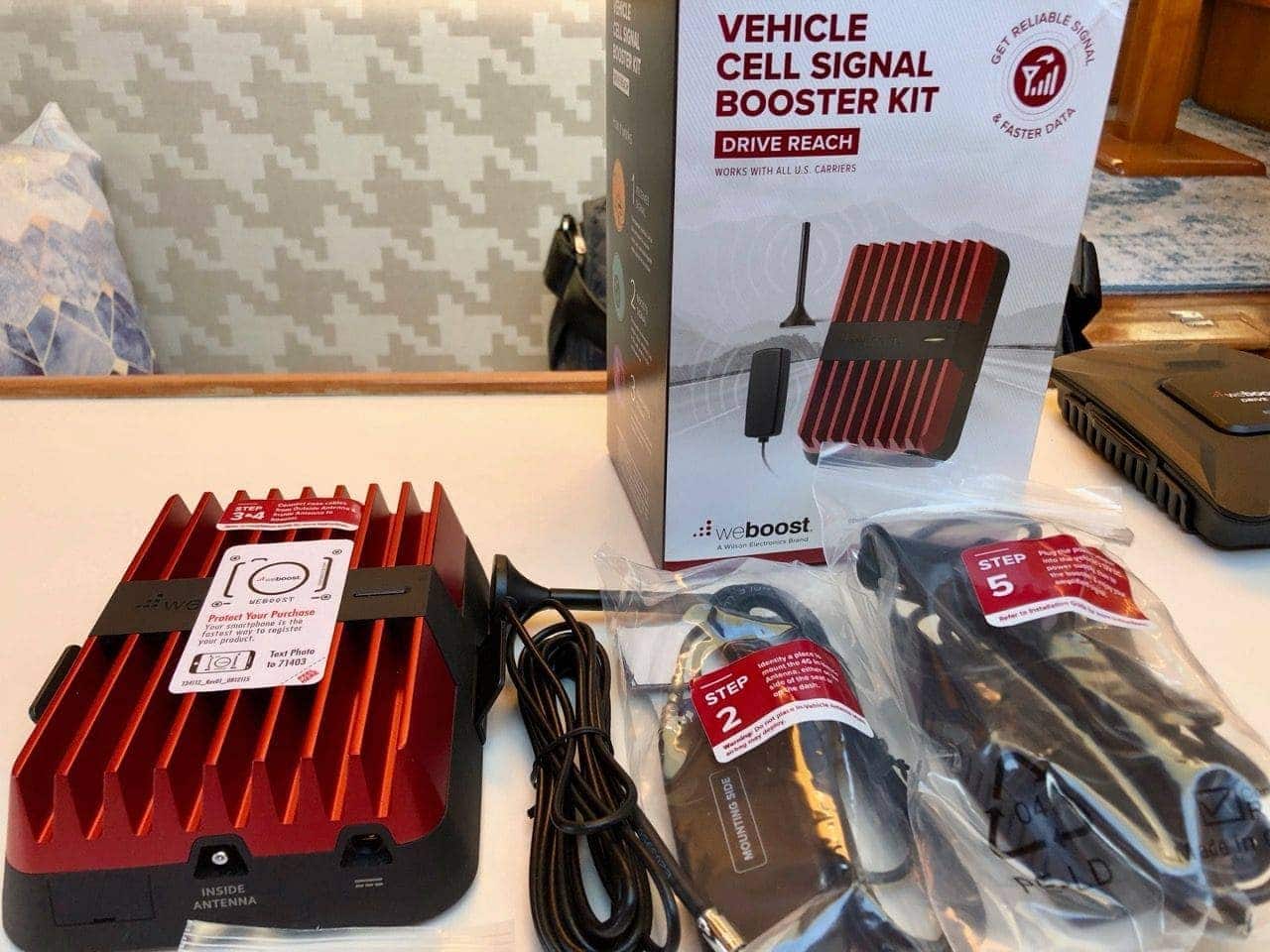
I bought the weBoost Drive Reach kit that is meant for a car/truck/RV. There is not a package (yet) that includes the Wilson 4G marine antenna that I recommend, but that’s OK – I already had one.
In the package, you get the amplifier, internal and external antennas, power cable, mounting bracket, velcro for other mounting options, screws, and various documentation.
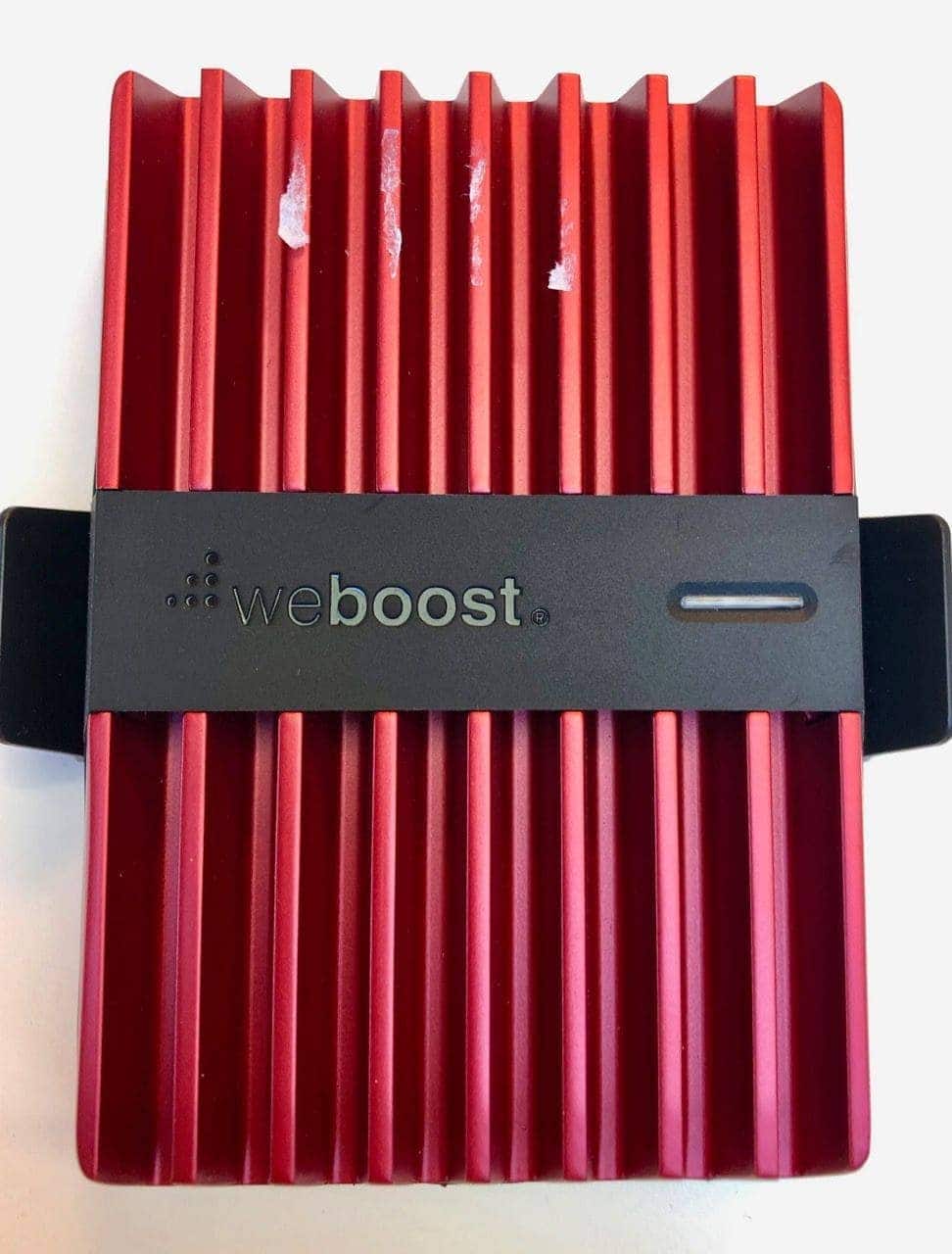
The amplifier itself is really well made and is quite a bit heavier than the 4G-X – in fact, the Reach is 1.8lbs and the 4G-X is only .75lbs. It has deep red aluminum heat sink fins, an LED light, and plastic grips on the side that allow it to snap into the mounting bracket easily. The glue that weBoost uses for their stickers also is really well made – so much so I couldn’t get it off easily!
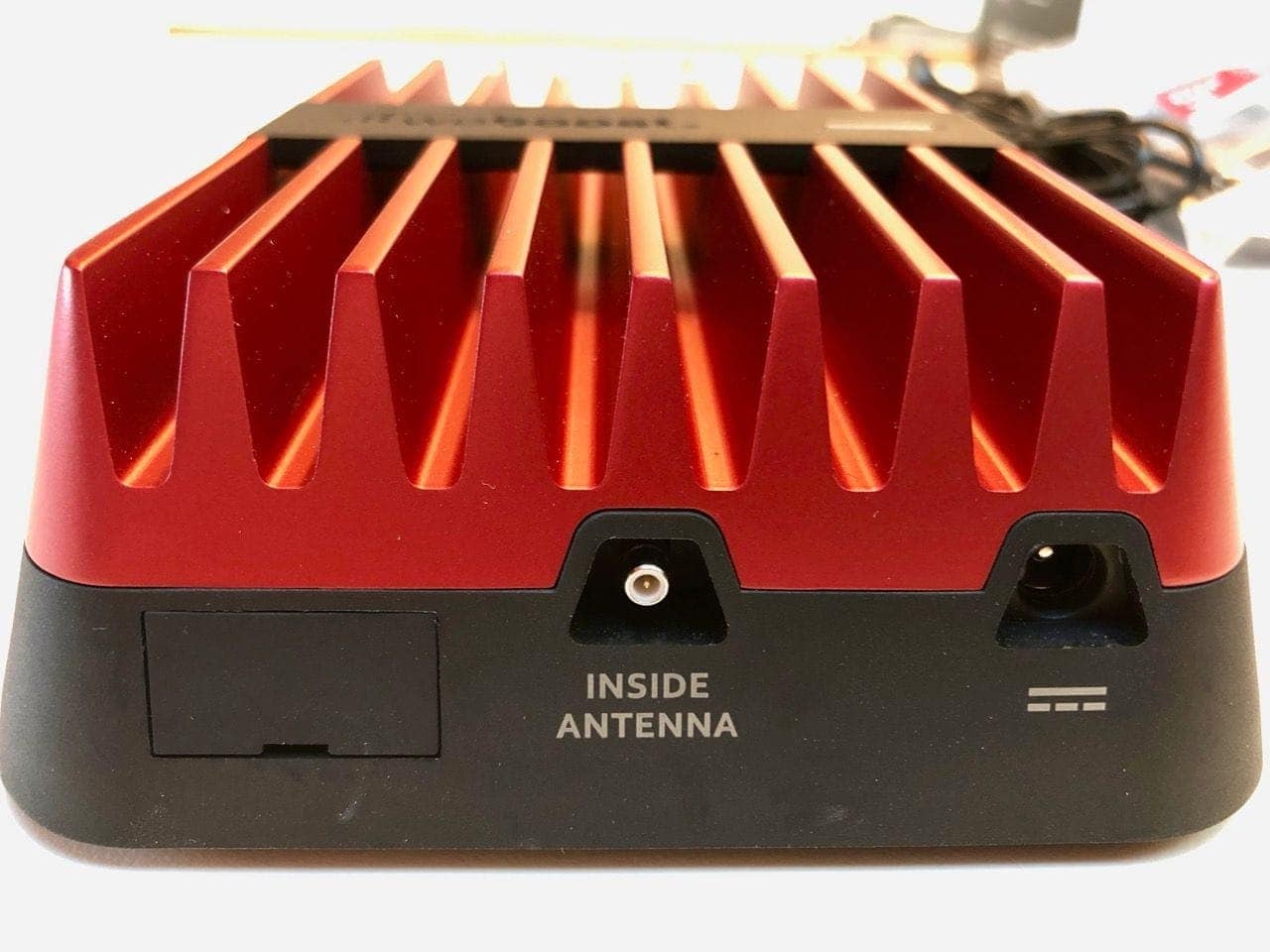
One end of the amplifier has the inside antenna and power connector. Both of these are new/different than the previous weBoost 4G-X – the connector for the antenna is different, and the power supply is more powerful, and has more features. More on that below…
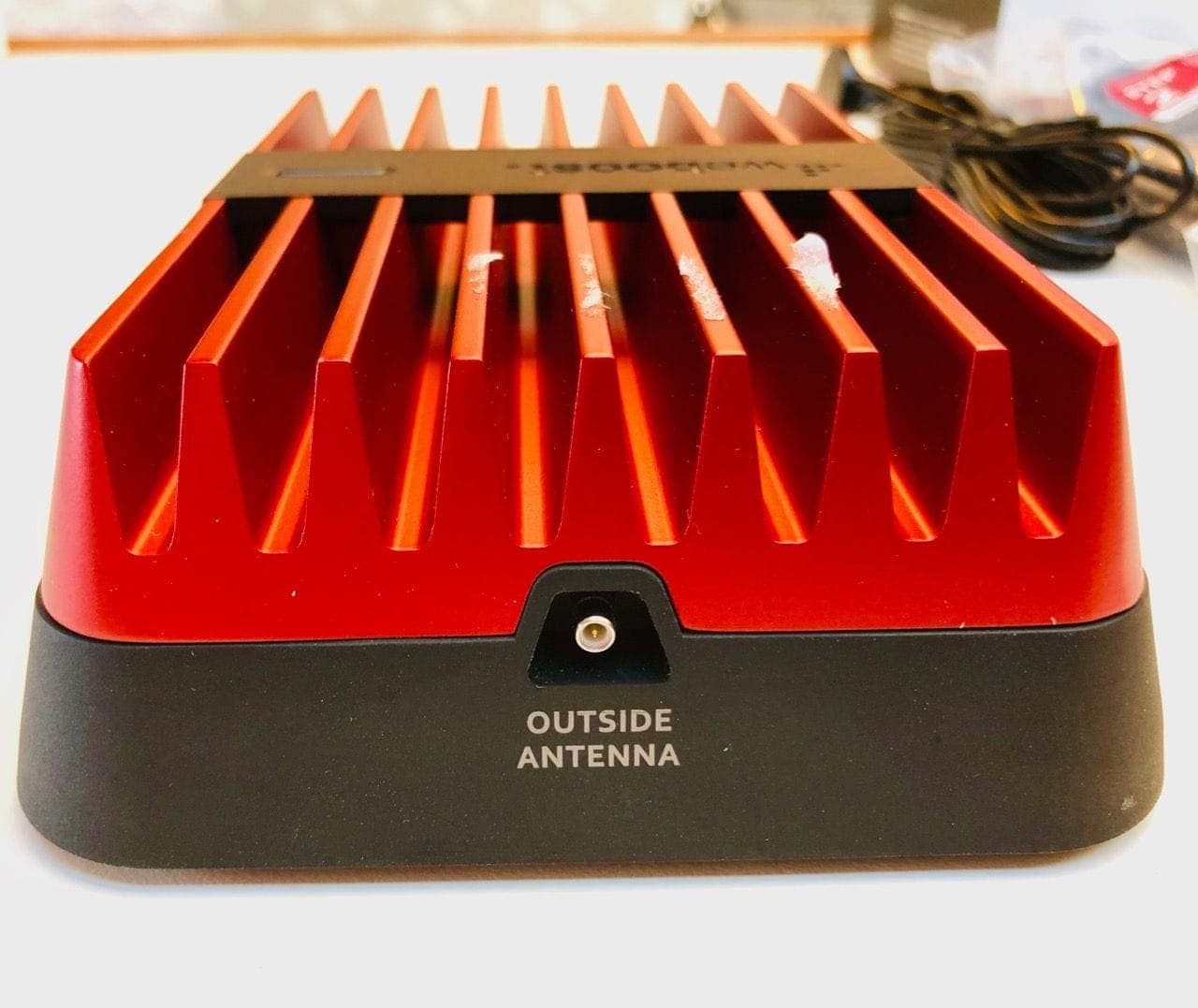
On the other end is the connector for the outside antenna – again, this has changed from the previous models.
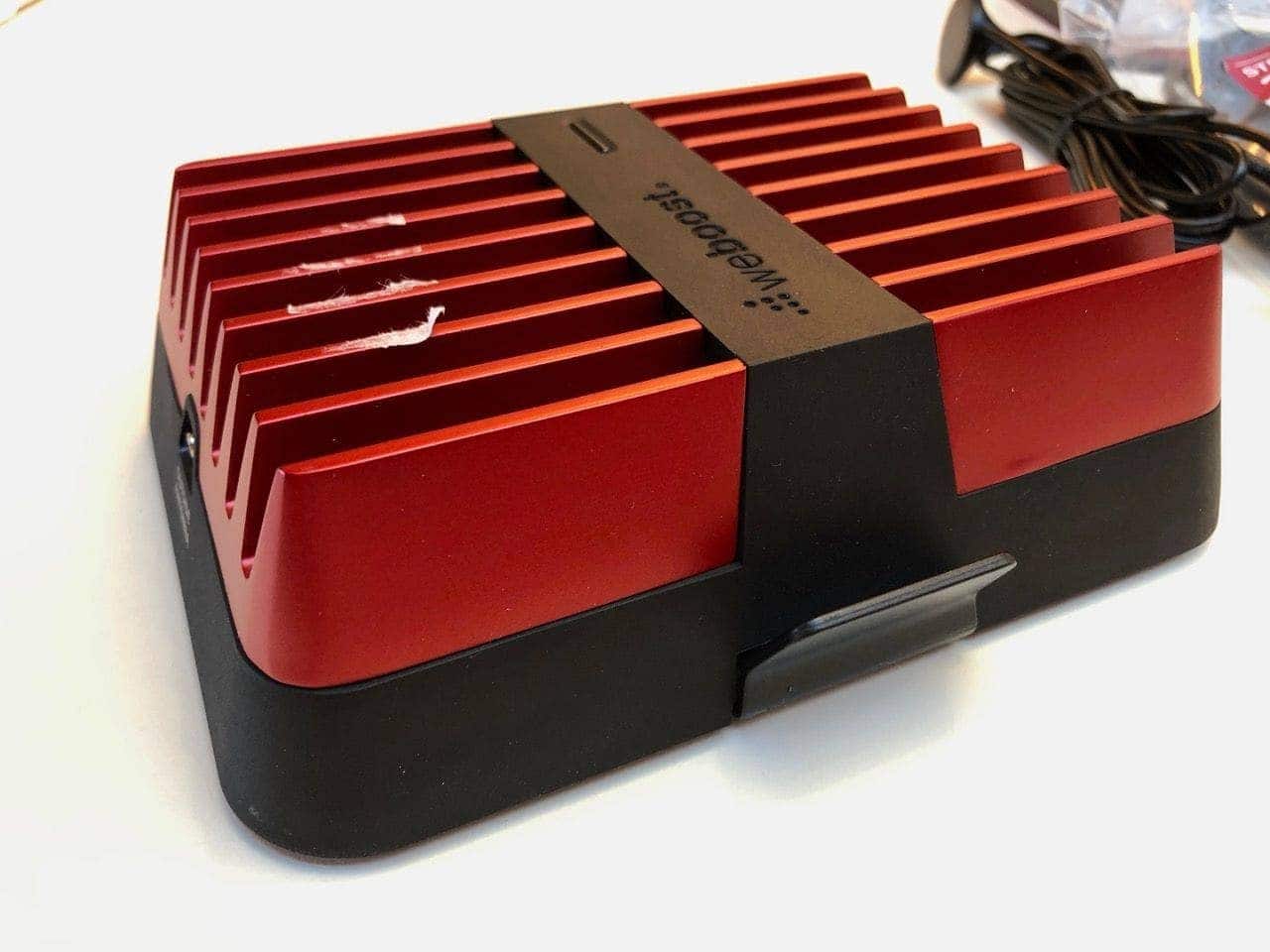
The amplifier itself is quite a bit taller than the 4G-X which can mostly be attributed to the aluminum heat sink fins. I think it looks far cooler with these, but their real purpose is to dissipate the heat during operation. This is one considerable difference over the 4G-X – the Reach gets quite hot, so ensure it has adequate ventilation. This picture also gives you a better view of the plastic release tabs that hold it into the mounting bracket.
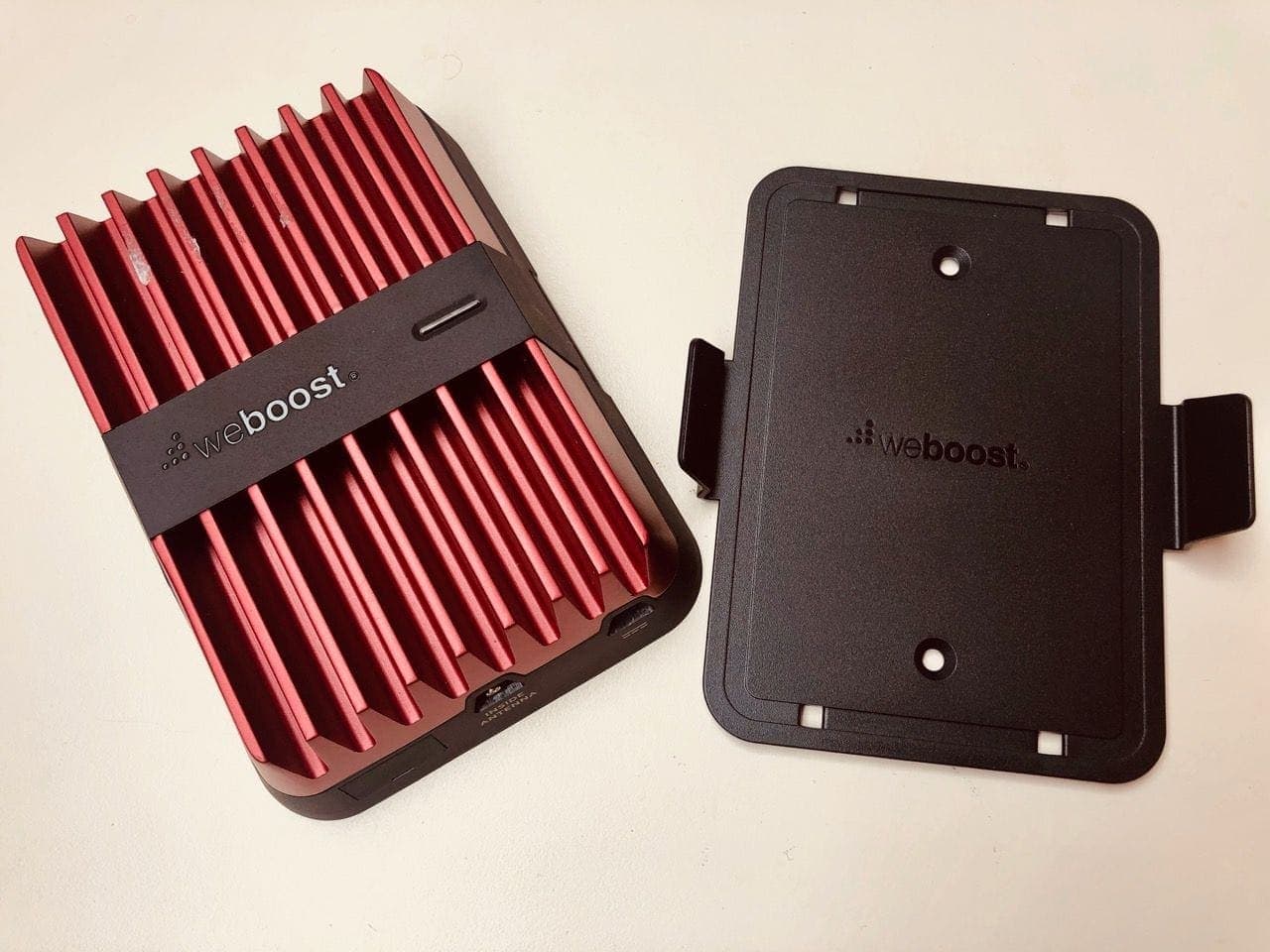
The mounting bracket is a lot better on the Drive. Not only does it have velcro strips already applied to the back, but the plastic clips are far easier to use to remove the amplifier. The 4G-X had a bracket that was really hard to work with, especially if you wanted to get the amp out.
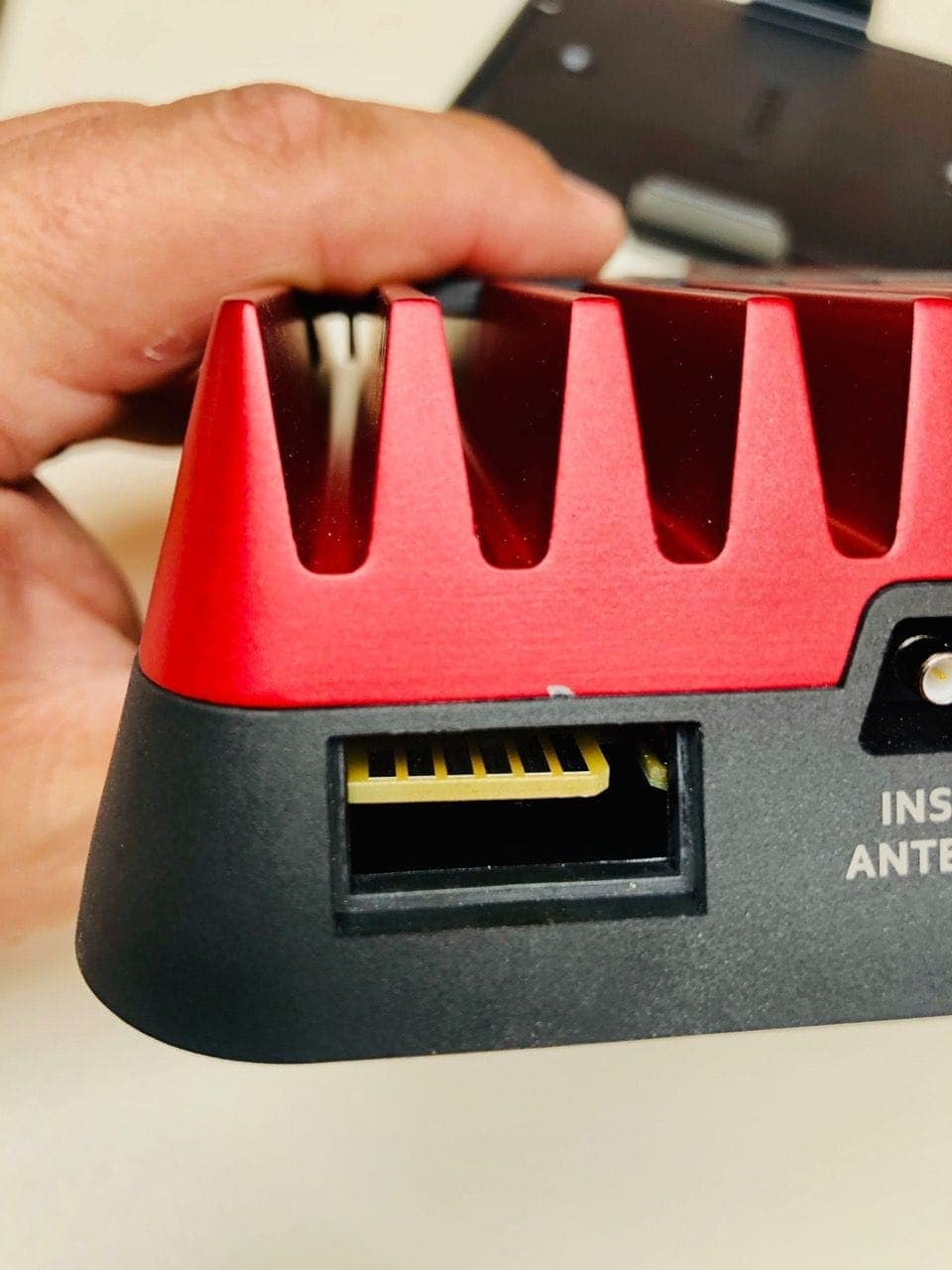
There is a covered connector on one end of the Drive as well – removing the cover shows a PCB with contact points on both sides, perhaps for a programming or diagnostics interface?
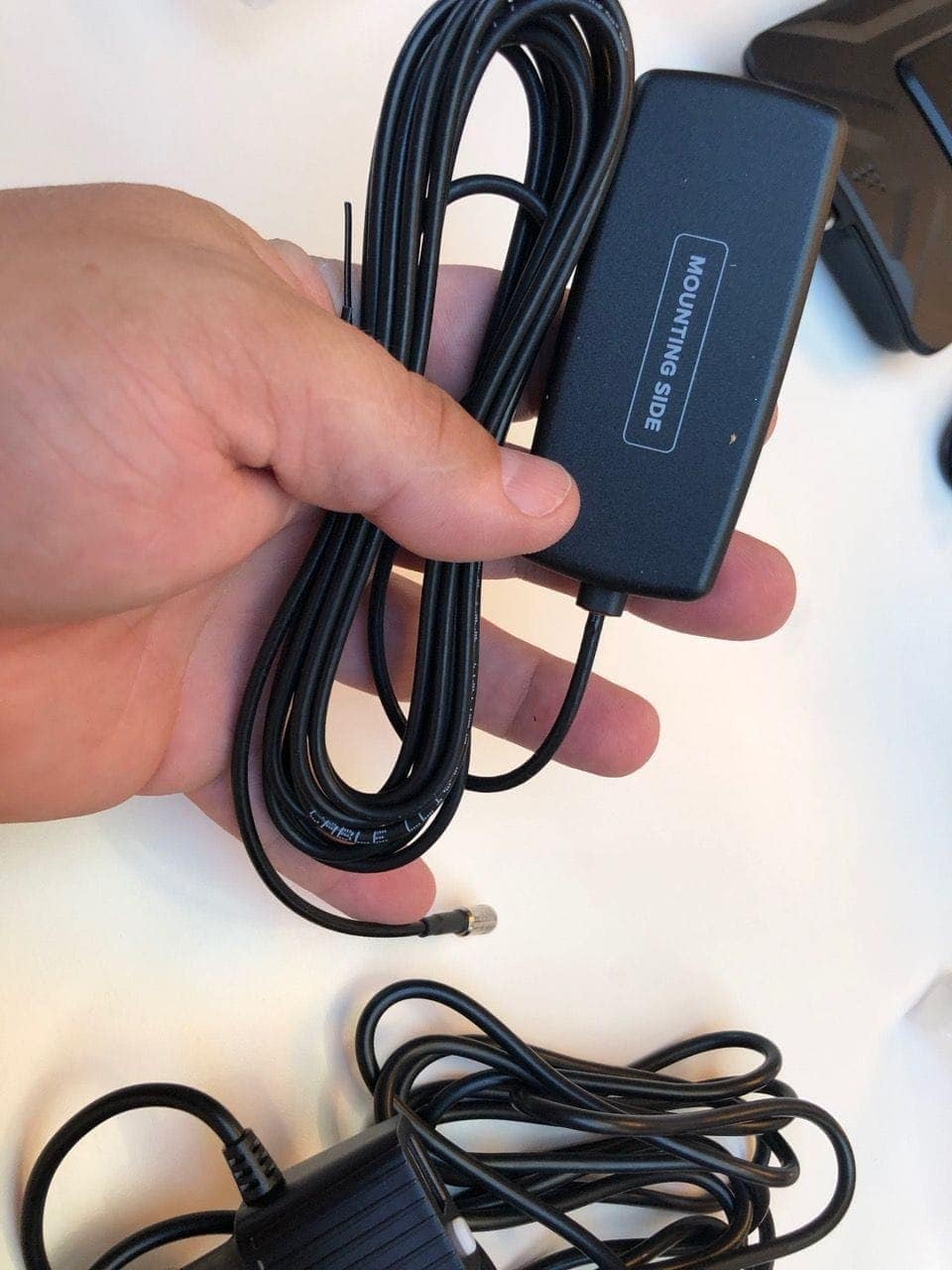
The outside antenna is one of the standard magnetic stubby antennas meant for a car/truck, which I won’t be using. However, the inside antenna is a nice change from the previous one, which I hated. This one is the flat panel antenna that I usually recommended people replace the standing desk one from the 4G-X. I used the provided double sided sticky tape to mount it within about 3″ of my Peplink MAX Transit router antennas (see Rendezvous internet setup for more details on my full solution). This antenna has outperformed the standard one provided with the 4G-X for almost all conditions I tested it in.
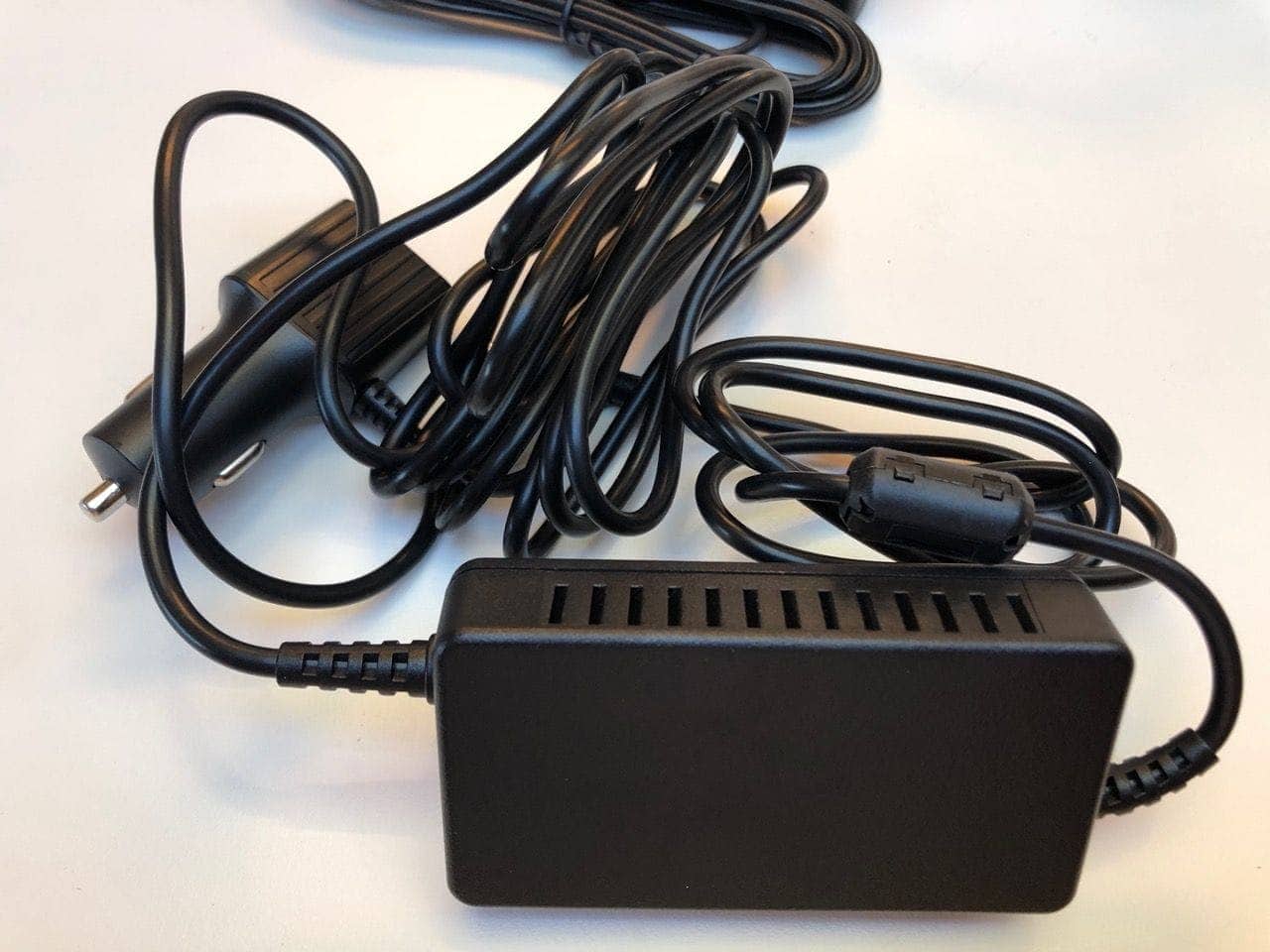
The power supply has also been updated with more power, a bigger brick, and a light and USB port on the 12V plug. Unfortunately it is still a barrel-type connector with no locking mechanism, and can work its way out due to vibration. The specs say this outputs 5V at a maximum of 4.5 amps, while the 4G-X was 6V at 2.5 amps. Even with the slight voltage difference, the Reach clearly uses more power, which is expected since it is a more powerful amplifier.
The really strange thing is the lack of any details at all on the power supply. Usually there will be info on the acceptable voltage ranges, input and output power, various numbers for government agencies, and more. This has absolutely nothing on it, which is really unusual.
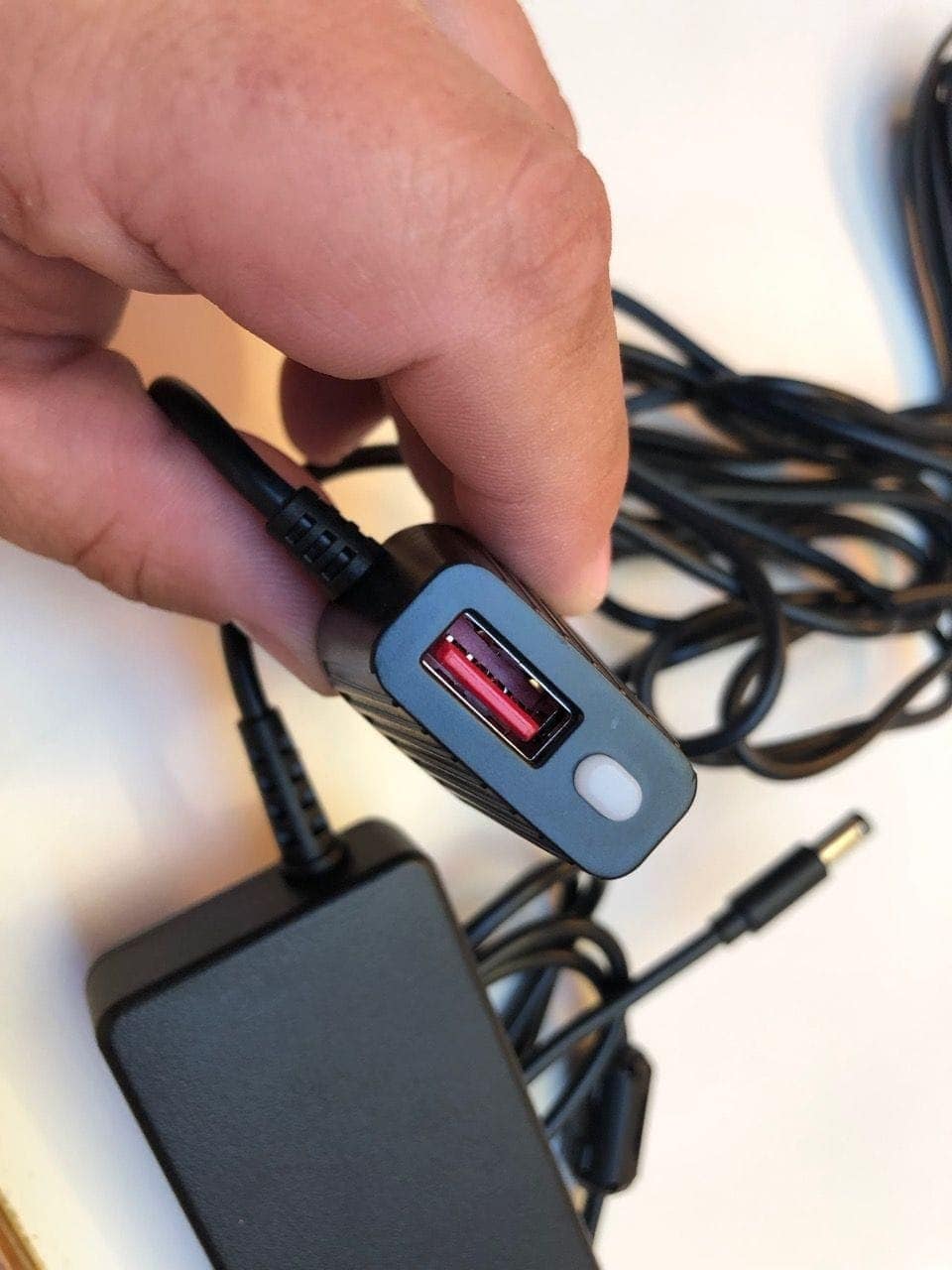
For those using this in a car, the 12V socket comes with a USB port that can charge a phone, and an indicator light. Because I was installing this permanently, I cut off the 12V plug and added two ring terminals to the wires so I could connect it to a fused circuit in my DC power system.
weBoost Drive Reach vs 4G-X size

The Reach is pretty similar in terms of footprint compared to the 4G-X. In fact, it is a little bit smaller top to bottom.
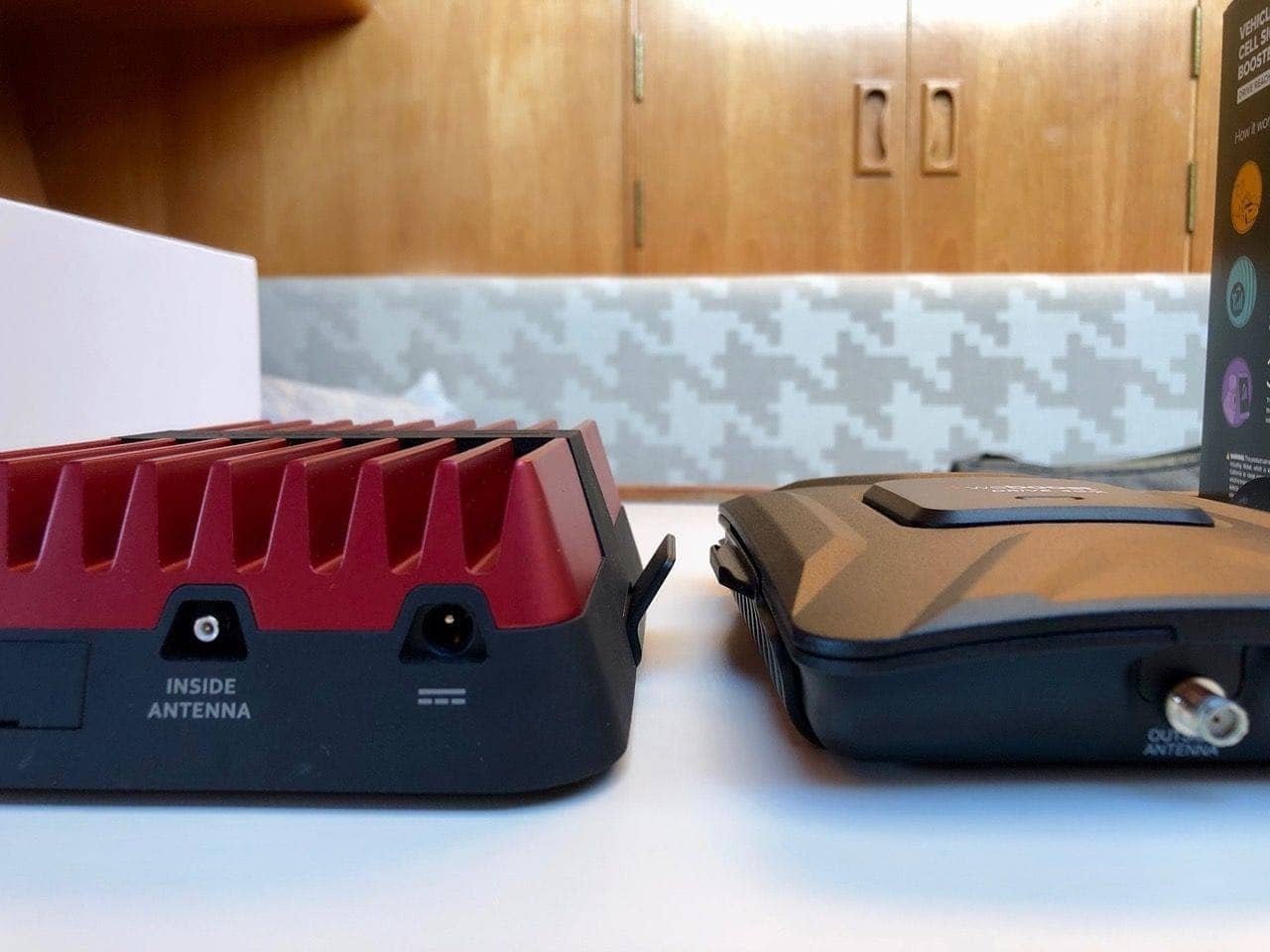
The height is where you’ll see the biggest difference. The fins on the Drive are quite a bit higher than the 4G-X.
Antenna Connector Changeup
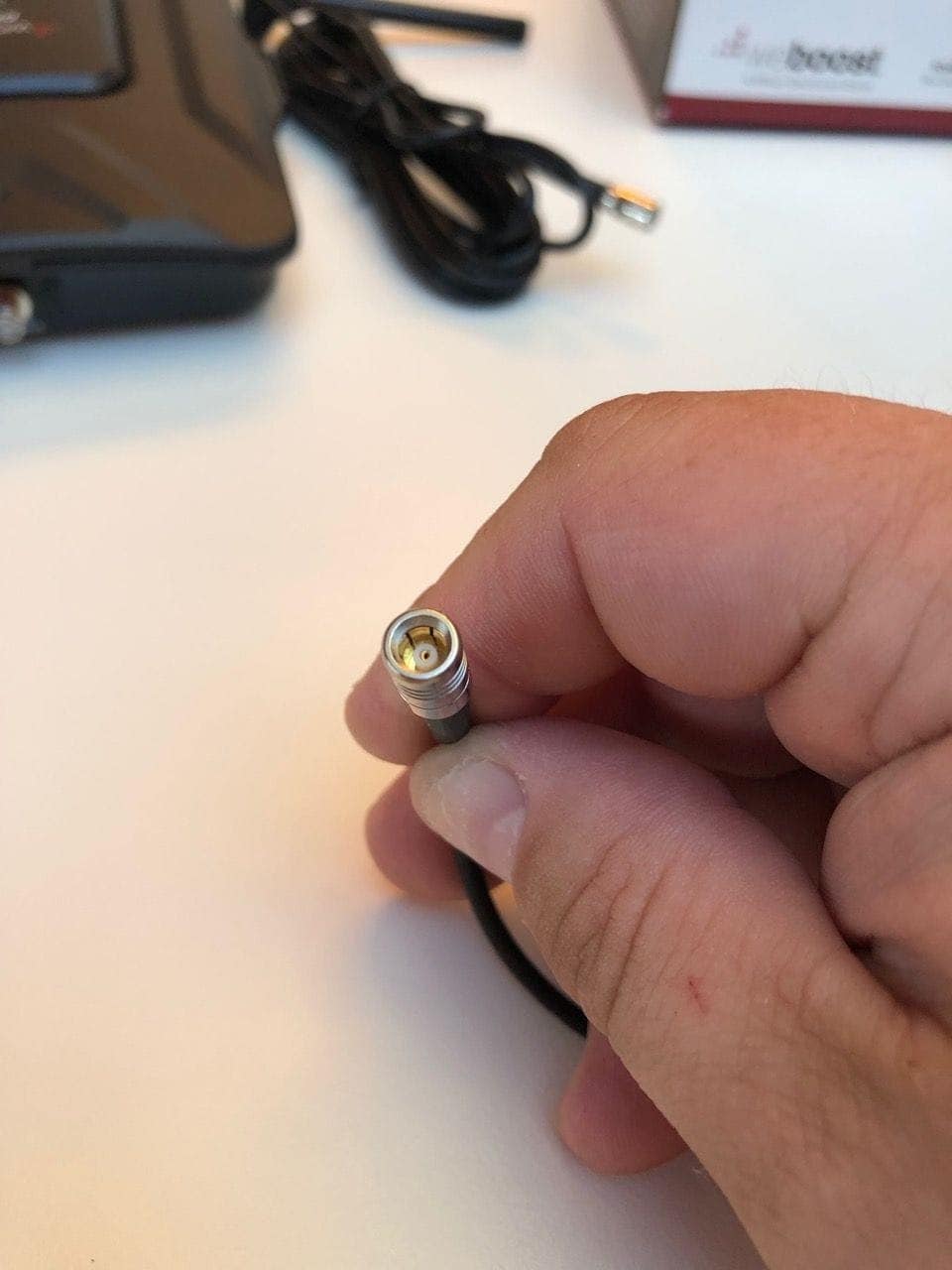
Both the inside and outside antenna connectors on the Drive Reach are completely different than previous models, using newer SMB connectors. I am not a fan of these connectors so far given how easy it is to unplug them. I think they should have stuck with the older SMA connectors which screw on, and have very little likelihood of falling off. However, I don’t know if there is a technical reason that this new connector is better – signal strength? Less cable loss?
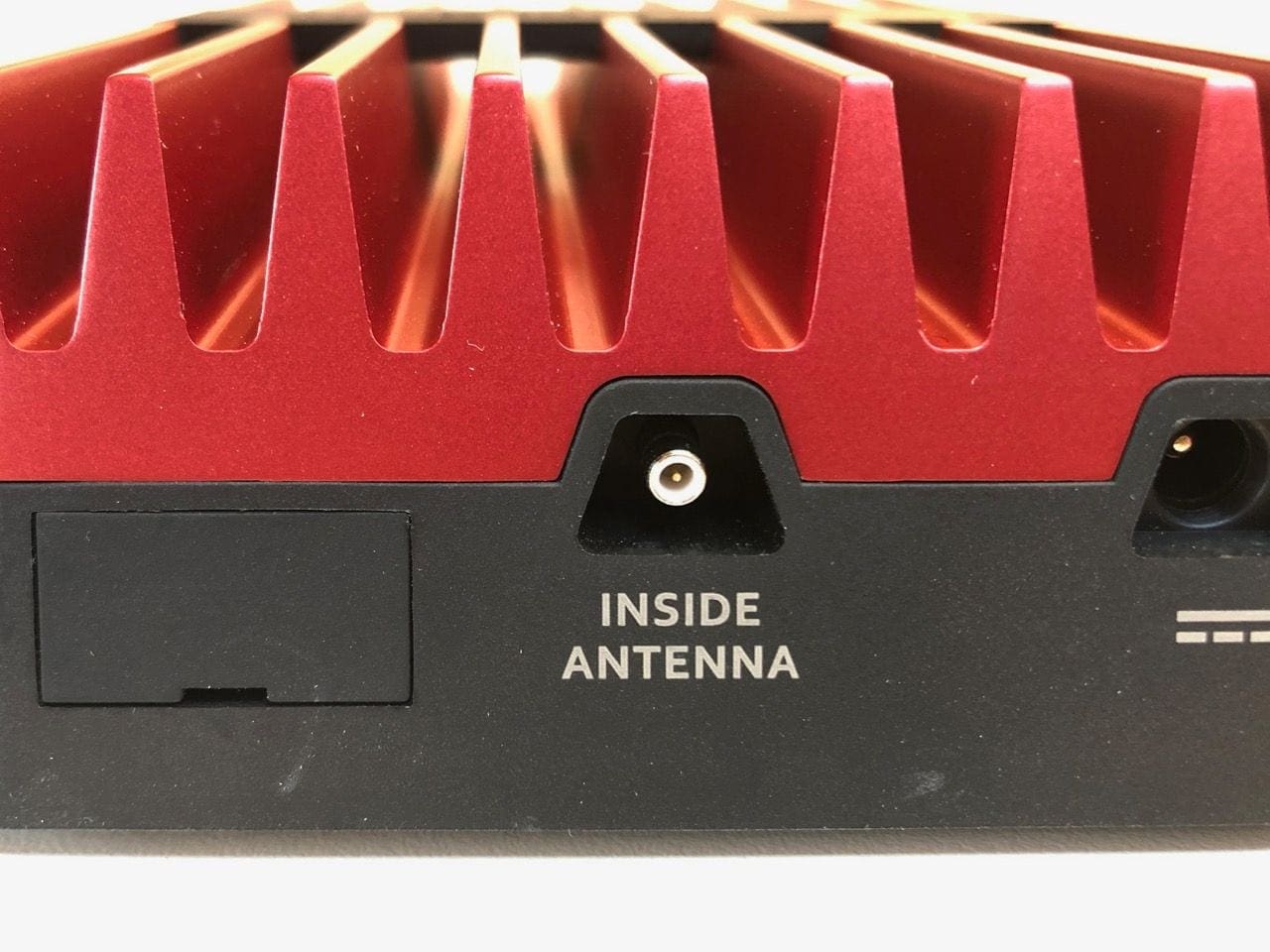
The included inside antenna will work just fine with this connector, of course. But if you have an external LTE antenna already, or want to use the Wilson 4G marine antenna I recommend, you’ll need an adapter.
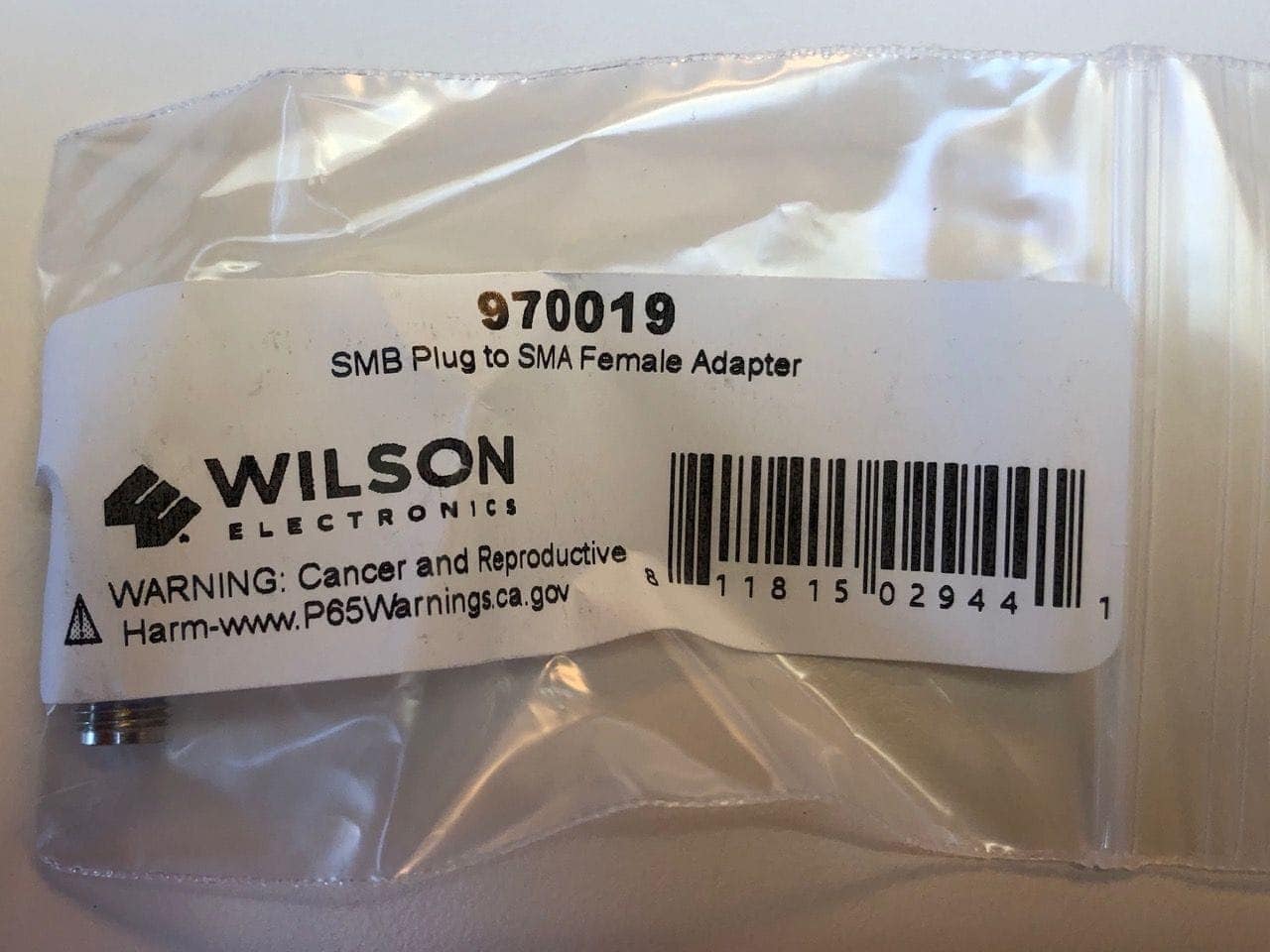
I have only found this adapter at Wilson as part number 970019. There are some on Amazon as of the time of this writing, but they don’t look quite the same.

Performance
After 4 months of use, including a long trip into Desolation Sound and surrounding areas, where LTE signals are much harder to come by, I can say unequivocally that the weBoost Drive Reach is a marked improvement on the 4G-X and highly recommend it.
In addition, the Drive has support for band 25 which may help with newer phones/devices. Right now, band 25 is primarily used by Sprint, but with their merger with T-Mobile, anything is possible. To understand what bands different providers use, see this Cheat Sheet.


Above you can see a comparison of the signal details from my Peplink MAX Transit LTE router with the weBoost Drive Reach amplified signal on the top, and the unamplified signal on the bottom. This test was done where the entire amplifier and external antenna setup was turned off for the right hand test, leaving the Peplink MAX Transit to fend for itself with its standard stock antennas. I’ve done tons of this type of test, both with Verizon and T-Mobile, and in varying conditions.
Overall, I can generally say that the amplifier is worth having in situations where you know towers will be far away and signal will be hard to get. Trips up into British Columbia for me will always include an amplifier, but while I am in the Salish Sea / Puget Sound nearer Seattle and the more populated area, I turn the amplifier off and directly connect my outside antenna to the Peplink.
If you need an amplifier because you will be away from major population areas or have areas of moderate to poor signal you need to boost, the weBoost Drive Reach will definitely help, and is a great upgrade from the Drive 4G-X.
If you already have a Drive 4G-X and it works well for you, it is not likely worth the cost to upgrade.
Conclusions
What I Like
- Performance / power – the improvements in power definitely help when you’re dealing with a poor signal.
- Mounting bracket – much better system for mounting.
What I Don’t Like
- Heat – this thing gets super hot!
- Connectors – the newer SMB connectors unplug very easily. I preferred the screw on SMA version.
You can help support SeaBits by using the links in my articles if you buy any of the products. I am part of the Amazon Affiliate program, and receive a small commission if you buy through my links. Thanks for your help in supporting the site and work involved!
Archived Comments
These are read only comments from the old system. Scroll down to participate in SeaBits Discussions, our new interactive forum attached to each article.
MrSteve007
January 4, 2020 at 9:36 pm
Excess electronics heat always means power consumption. What’s the real-world standby and in-use power draw of this setup? Especially considering that the power-supply appears to have no printed specs.
- Steve Mitchell
January 4, 2020 at 7:40 am
Good question. I didn’t end up testing how much it consumed since it was integrated into a rather large panel of internet stuff. Doing some basic math though, in the worst case scenario:
5V * 4.5 amps = 22.5 watts
Assume 90% conversion efficiency – 22.5 watts / 90% = 25 watts
So at 12V DC, that would be 25 watts / 12 V = 2.08 amps
That assumes it is using the entire capacity of the power supply, and that there is a 90% conversion efficiency which could be high. I would hope it wouldn’t be running the power supply flat out all the time. 2 amps for the amplifier itself seems like a lot, but I suppose that’s the price to pay for grabbing a really remote signal.
Also, my math skills are about as good as my carpentry skills, YMMV.
Kevin McLaughlin
June 5, 2020 at 11:28 pm
Steve, great write-up. I just took delivery of my Reach, and want to hardwire it. I called Wilson Electronics about a direct wire kit, and the rep said cutting off the cigarette lighter style plug will not work, and that I need to purchase the Direct wire assembly. How have you managed so far with your modified power cord?
MeHi
September 27, 2020 at 1:09 pm
CONNECTION CAUTION: Once you connect the antennas ‘Don’t try to remove them once on’. The elbow center pin broke on both sides of my booster’s motherboard when I disconnected connect and reconnected the SMB plugs with new cables.
Inside the booster, SMB housing sleeves are friction held in place by the stiff silicone/rubber casing because there is no way solder will adhere to the type metal of sleeve housing they used to connect to the motherboard.
I’m my option, It’s a design flaw or a engineering miss calculation to use SMB connectors.
The fix. I was able to solder a center pin to the broken pin, after I grinned drown the square metal housing used to extend (elbow) the SMB sleeve connector.
I ran the cable out of the box 6″ and made new SMA connections so I can swap out cables easier.
After putting it back together, I’m back to seeing a constant green light on the unit and it’s working again. It’s a good unit, expensive for what’s its worth.
I did this DIY repair because I lost my warrantee information, I’m cheap and WeBoost have not responded to my emails. I wanted to share this with you Steve and your readers, so you don’t break your weBoosts as I did.
Patrick
March 4, 2021 at 1:34 pm
Just noticed a slight mixup in your captions – under Performance you have the first table captioned “Verizon signal without weBoost Reach” and the second as “with weBoost Reach”, but it should be the reverse (as becomes clear in the text paragraph after those). At first I was confused as to why the RSSP was better in the first table.
This article has been very helpful in the Drive Reach install I’m working on now! (they sent my booster without a mounting bracket though – argh – apparently there are different variants and no consistency in the “marine” kits).
- Steve Mitchell
March 4, 2021 at 2:26 pm
Thanks! I switched those – that was my mix up!
From what I have heard, they have stopped shipping mounting brackets and they no longer “recommend” using the 12v cigarette adapter for power and require a dedicated 12v power brick too that can be priced higher.
Lots of folks have also had issues with the connectors vibrating out, so keep that in mind in the install. - Eric Loewenthal
March 8, 2021 at 11:26 am
Heard it from me 🙂
I just ordered one a few weeks ago. Then had to order the mounting base separately.
The wilson sma-smb connector was terrible so i found this one and it is a much much better connection and cheaper!
DHT Electronics RF coaxial Coax Adapter Connector SMA Female to SMB Female https://www.amazon.com/dp/B00CVR4NN0/ref=cm_sw_r_cp_api_glt_fabc_4T31MDT643XAMD04TMNA?_encoding=UTF8&psc=1
I ordered the hardwired power brick and was disappointed to find out that it was just a splice of the 12V plug wire. Literally just strip the black insulator. Twist the outside wire and heat shrink it for the negative wire. Use the white wire as positive. Add a heat shrink at the base of the splice to cover where you removed the insulator. You can see how it should look in the hardwire power product pictures. - Steve Mitchell
March 8, 2021 at 7:53 pm
Thanks for the updates!
I have heard from multiple people on the mounting bracket and power supply unfortunately, so it is good to know it is not worth ordering the separate one, and to also have an alternative on the connector.
Ian Crosby
March 30, 2021 at 8:07 pm
So I am in the process of installing one of these in my Nordic Tug 37. I followed your recommendation and used a Poynting Omni-400 as my outside antenna, mounted on the forward port corner of my pilothouse, and about five feet horizontally from the Weboost unit in the overhead electronics bay inside the pilot house. The thing is there is nowhere within the reach of the supplied cable that I can locate the indoor antenna without getting an oscillation shutdown. Any suggestions?
- Steve Mitchell
July 29, 2021 at 9:57 pm
Sorry for the delay in replying – the comment system flagged your comment as spam for some reason!
Are you trying to use the system in a place where there is good signal? It can shut down or show similar or identical lights if the towers are too strong nearby.
Ian Crosby
July 29, 2021 at 10:06 pm
My slip where I have been trying to set it up has good cell coverage so maybe that’s the problem. Do I need to be some place that is lacking or marginal to place the interior antenna somewhere it won’t get into a feedback loop in the conditions when I am likely to use it?
- Steve Mitchell
July 30, 2021 at 9:12 am
If you’re just getting a red light, then it is almost always from the internal antenna being too close to the external one. Most of the kits come with a pretty decently long cable on the internal one – you might try just temporarily holding it as far from the external antenna area as possible and see if you get rid of the red light. You could even buy an extension cable and get it really far away.
If it still stays red, it *could be* that the local signal is interfering, but that should show a different light pattern (blinking green & red). - Ian Crosby
July 30, 2021 at 9:41 am
Ah, I was trying to place it so as to avoid either condition. Thanks for the clarification.

